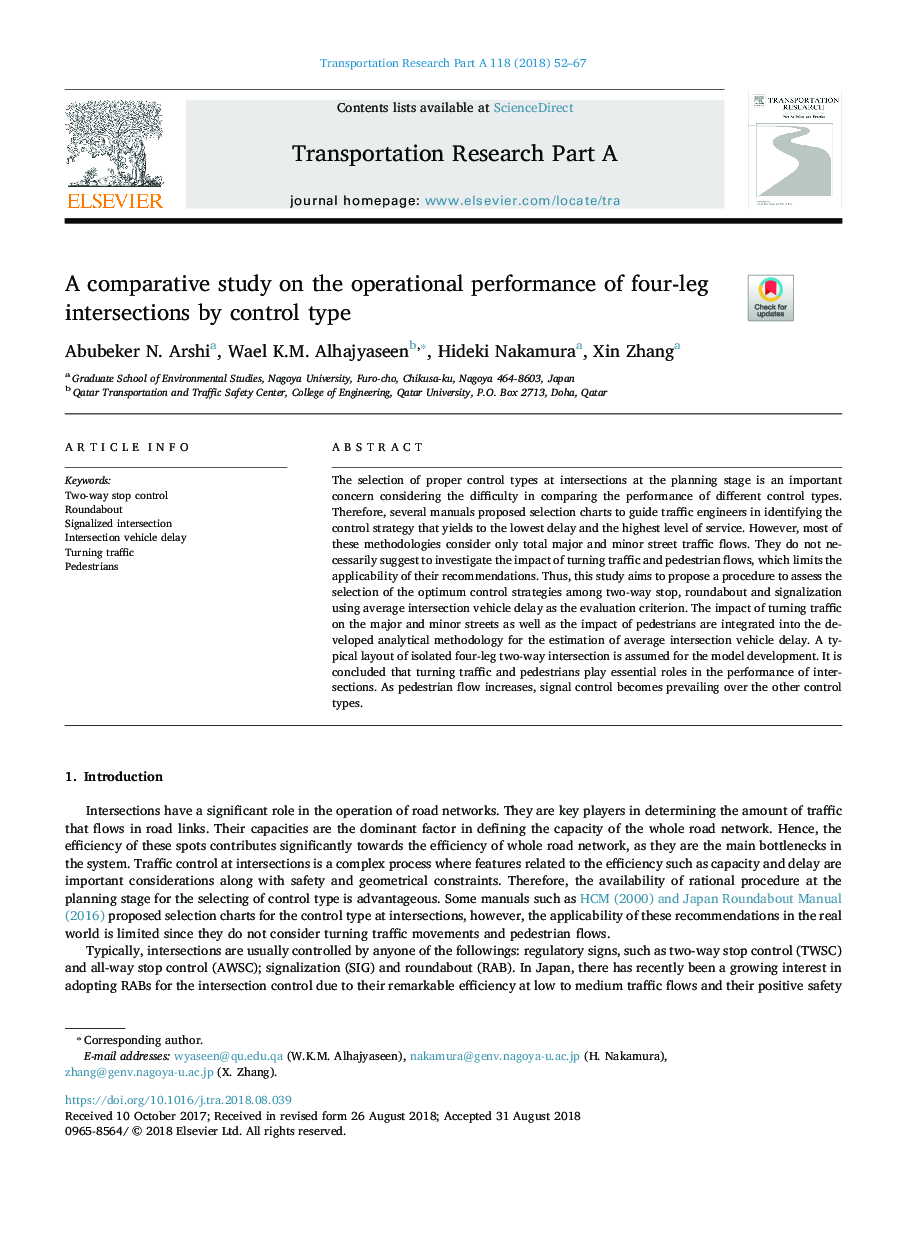| Article ID | Journal | Published Year | Pages | File Type |
|---|---|---|---|---|
| 10145871 | Transportation Research Part A: Policy and Practice | 2018 | 16 Pages |
Abstract
The selection of proper control types at intersections at the planning stage is an important concern considering the difficulty in comparing the performance of different control types. Therefore, several manuals proposed selection charts to guide traffic engineers in identifying the control strategy that yields to the lowest delay and the highest level of service. However, most of these methodologies consider only total major and minor street traffic flows. They do not necessarily suggest to investigate the impact of turning traffic and pedestrian flows, which limits the applicability of their recommendations. Thus, this study aims to propose a procedure to assess the selection of the optimum control strategies among two-way stop, roundabout and signalization using average intersection vehicle delay as the evaluation criterion. The impact of turning traffic on the major and minor streets as well as the impact of pedestrians are integrated into the developed analytical methodology for the estimation of average intersection vehicle delay. A typical layout of isolated four-leg two-way intersection is assumed for the model development. It is concluded that turning traffic and pedestrians play essential roles in the performance of intersections. As pedestrian flow increases, signal control becomes prevailing over the other control types.
Related Topics
Physical Sciences and Engineering
Engineering
Civil and Structural Engineering
Authors
Abubeker N. Arshi, Wael K.M. Alhajyaseen, Hideki Nakamura, Xin Zhang,
